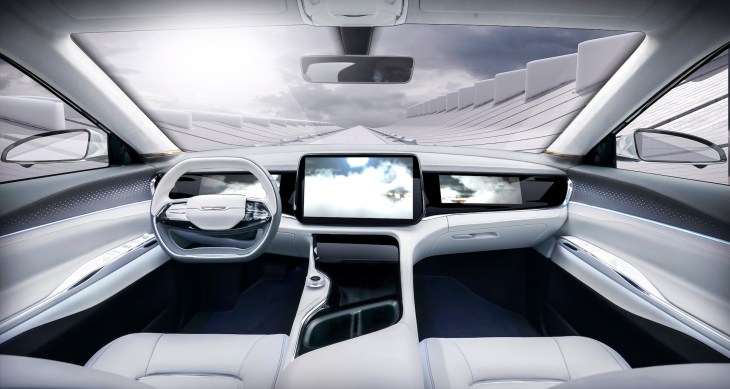Chrysler’s new EV will create a new category, drawing upon lessons learned from designing the brand’s minivan, according to chief design officer Ralph Gilles.
“Chrysler was one of those brands that was honestly on the OR table, and we decided to reinvest in it big time,” Gilles said at the TechCrunch Sessions: Mobility conference last week. Now, the brand is planning to go fully electric by 2028, beginning with the 2025 launch of its first EV.
Based on the Chrysler Airflow crossover concept shown at the New York Auto Show in April, this inaugural EV is tasked with setting the design direction for parent company Stellantis’ $35 billion investment in bringing more EVs to market.
“We’re going to come late to the party, but with a really good bottle of wine.” Ralph Gilles
Gilles said the Airflow creates a new vehicle segment that harkens back to the vehicle he most wants to be known for: the Chrysler Pacifica minivan.
“It’s such a Swiss Army knife,” Gilles said. “It’s the unsung hero of a lot of busy people’s lives.”
The minivan category is rebounding after plummeting to a steady half-million annual units for three U.S. models: the Chrysler Pacifica, Honda Odyssey and Toyota Sienna.
“This new generation of families is more practical than their parents,” Gilles said. “They’re not so image conscious. They’re thinking more like, ‘What’s the best device for my life?'”
Now, the minivan is merging with the sedan and SUV segments to create a new category with the Chrysler Airflow and the brand’s future EVs. The flat battery pack underpinning the vehicle allows for the type of flat floor found in a minivan that makes it easier for occupants to enter and exit.
“The battery pack forces the occupants up a little bit, so it’s changing the silhouette of the modern car,” Gilles said. “We’re fusing SUVs with sedans and a little bit of van goodness because of the flat floor.”
Electric vehicles allow for an architecture Chrysler has been wanting to play with, he said, adding EVs “already have the false floor for the batteries, and now that we can give it a frunk, there’s even more functionality.”
The new model is named after the original Chrysler Airflow, which Gilles called a “catastrophic failure” of the mid-1930s. But the Airflow EV boasts better aerodynamics that give it a “considerable” range that’s superior to the Ford Mustang Mach-E crossover’s 305 miles, he said.
Chrysler has not announced details of the production version, but said the concept car can travel up to 400 miles on a single charge and comes with fast-charging functionality as well as a long list of technologies, including the automaker’s STLA AutoDrive system, which it is developing with BMW to feature Level 3 automated driving capabilities.
The Airflow concept also features Stellantis’ STLA Brain electrical and software architecture to deliver over-the-air updates, and its SmartCockpit software to provide navigation, voice assistance, e-commerce and payment applications.
So far, Stellantis has been late to electrify its North American fleet. It has instead created plug-in hybrid versions of the Pacifica and a handful of Jeep models.
“There’s people out there as early adopters, and I applaud that,” Gilles said. “We’re going to come late to the party but with a really good bottle of wine.”
